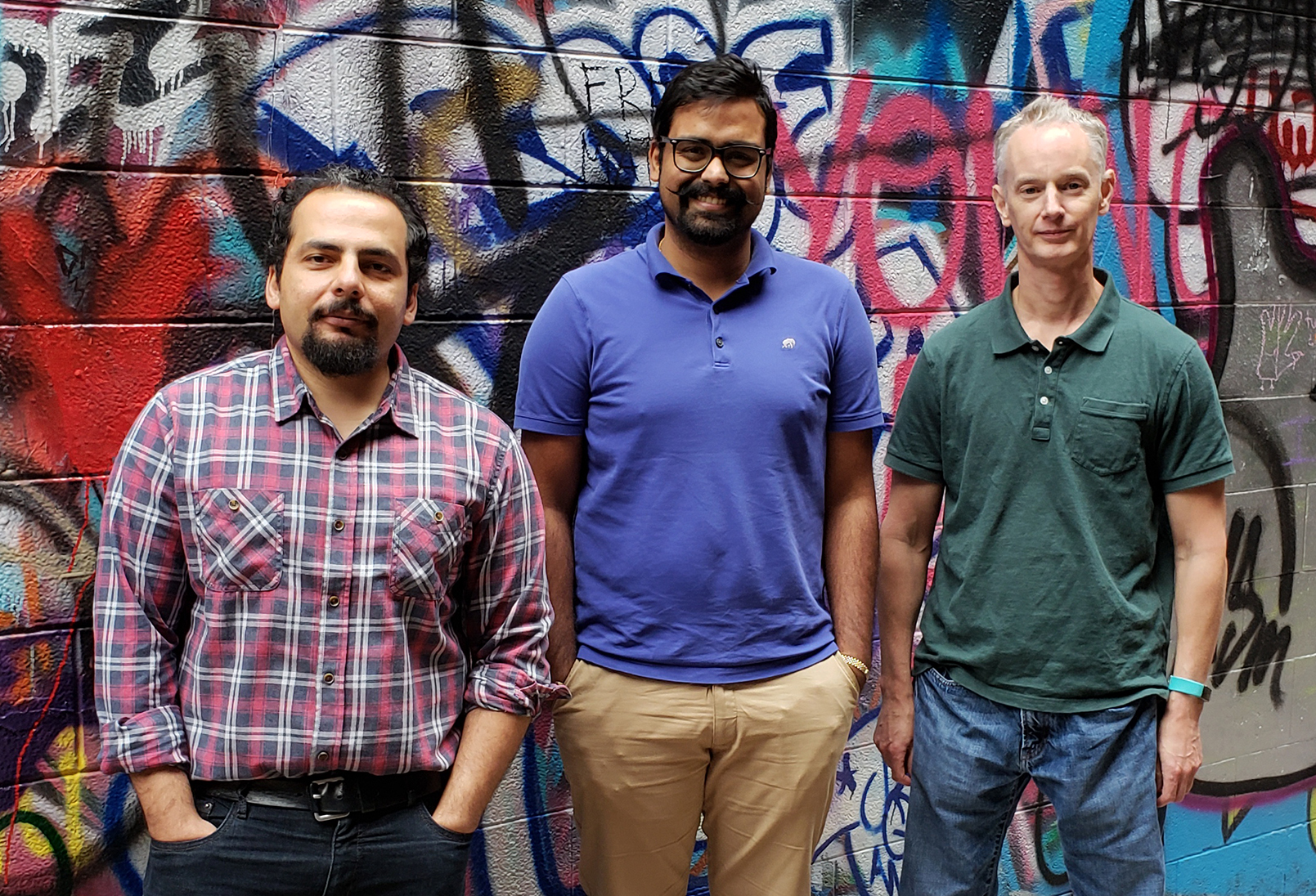Taking on the limits of computing power
By harnessing the power and speed of graphics processing units, a University of Michigan startup can dramatically accelerate gene sequencing, shortening tasks that took multiple days to a single hour.

 Enlarge
Enlarge
The emerging field of genomic analysis is on the cusp of revolutionizing our understanding of diseases and the methods for their treatment and prevention. Genomic data can offer patients cures and options catered to their specific needs, making it a key tool for personalized or precision health techniques.
Right now, this tool’s potential is limited by its sheer size – “whole genome sequencing” requires the analysis of massive amounts of DNA data, and can take up to 48 hours to complete. But by harnessing the power and speed of graphics processing units (GPUs), University of Michigan startup Parabricks can dramatically accelerate gene sequencing, shortening tasks that took multiple days to a single hour.
Founded by Scott Mahlke, professor of computer science and engineering at U-M, and his former students Mehrzad Samadi and Ankit Sethia, Parabricks employs proprietary high-performance computing techniques to overcome data-intensive bottlenecks in different applications. Parabricks software integrates seamlessly with state-of-the-art deep learning techniques, Mahlke says, and enables users to focus on extracting insights from data.
While working with Mahlke at U-M, Samadi and Sethia developed software that allowed graphics processing units, or GPUs, to be used for a variety of applications. These specialized processors are designed to do the heavy lifting for video games and smartphones, which require rapid pixel and data management on a massive scale. As a result they’re consistently able to outperform common central processing units (CPUs) on data-intensive problems.
The researchers generalized this performance for other computing tasks. Initially, they focused on breadth – they would start a company around high performance software that other developers could use to build their own applications. Any market could use their tools (what they called “parallel-processing bricks,” becoming their namesake) to apply the power of GPUs to their own particular needs.

 Enlarge
Enlarge
Ultimately, though, it was much easier to build a business around the applications themselves, particularly for an area in keen need of high performance computing.
The team turned their eyes to the rapidly developing world of personalized health, in particular genomics. This burgeoning diagnostic tool is one of the keys to precision health, which promises a future in which patients can be prescribed treatments specific to their condition, lifestyle, and genetics.
But the massive data analysis this technique requires makes it prohibitively expensive. To roll this out for widespread use, with tens of thousands of samples to analyze, would mean years of CPU-based processing. Fortunately, GPUs are built for ultrafast data manipulation.
Parabricks’ software can analyze more than 12,000 whole genomes in a year on a single GPU server – a task that would require 40 CPU servers.
“Parabricks software on GPUs enables the unusual combination of scaling speed and throughput of whole genome sequencing by over an order of magnitude,” Mahlke said. “At the same time, it reduces the computing cost, which is a critical step for precision medicine treatments to become standard for all patients.”
The focus on precision health turned out to be just the right move for the company – since 2017, Parabricks collected grants totalling more than $1 million. This total included a National Science Foundation Small Business Innovation Research Phase II grant of $748,000, with a matching grant of $125,000 from the Michigan Emerging Technologies Fund, an NSF Phase I grant of $225,000, which had a matching state grant of $25,000, and a Michigan Translational Research and Commercialization program grant of $100,000. Other early investments include $200,000 from the Monroe-Brown Seed Fund, $65,000 from Invest Detroit, $50,000 from Detroit-based Invest Michigan, and an Ann Arbor Spark grant of $50,000.
But its biggest early contact turned out to be a partnership with NVIDIA, one of the leading GPU developers on the market. The company named Parabricks a preferred partner and a member of its NVIDIA Inception program, which connects AI startups with GPU tools, tech, and deep learning experts. This partnership put Parabricks in touch with its first two international customers.
Parabricks has announced plans to raise up to $2 million in a seed round by late March 2019.
“To expand its footprint, Parabricks plans to raise between $1 million and $2 million in the first quarter,” said Dave Gregorka, who is serving as the company’s president on a part-time consulting basis.
As it grows, Parabricks joins other U-M startups such as Compendia and Genomenon in creating a genomics industry in Ann Arbor. It’s hiring now for a vice president of business development, a business development manager and a developer, he said.
Using GPUs to their fullest extent may turn out to be key to the future of computing, and the founders of Parabricks are uniquely positioned to make waves in the field.
“We are all very excited about the future of Parabricks,” Mahlke said. “With our first product launch in 2018, more and more users are trying the software and they simply love the speed, accuracy, and ease of use.”
 MENU
MENU 
